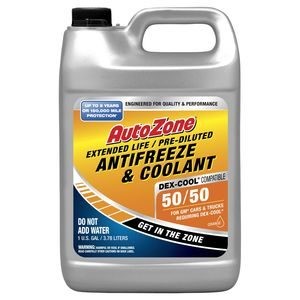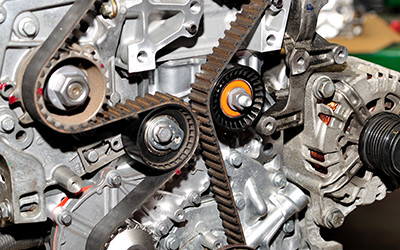How To Fix A Broken Car Battery: A Complete Guide
Fixing a broken car battery doesn’t have to be a headache. At CARDIAGTECH.NET, we provide you with the knowledge and tools necessary to diagnose, repair, and maintain your car battery, ensuring reliable performance. Learn how to troubleshoot common issues, jump-start your vehicle, and even replace your battery with confidence, all while optimizing your vehicle’s electrical system.
1. Common Causes of a Dead Car Battery
Several factors can contribute to a dead car battery. Identifying the cause is the first step toward fixing the problem.
1.1. Human Error
Often, a dead battery results from simple oversights. Leaving headlights, interior lights, or accessories like phone chargers running after the engine is off can drain the battery. Short trips don’t allow the alternator enough time to recharge the battery fully, leading to depletion.
1.2. Battery Age
Car batteries, typically lead-acid, have a limited lifespan. Over time, a process called sulfation occurs, where sulfate crystals coat the battery’s negative plates. This reduces the battery’s ability to deliver power. According to a study by the Battery Council International, the average car battery lasts between 3 to 5 years. If your battery falls within this range, it might be nearing the end of its life.
1.3. Battery Defects
Although less common, manufacturing defects can cause a battery to fail prematurely. If you consistently experience a dead battery, especially in a new vehicle or with a recently replaced battery, it’s worth having a mechanic perform a battery test to check for internal defects.
1.4. Charging System Issues
Sometimes, the battery isn’t the problem. A faulty alternator, a broken serpentine belt, or corroded battery cables and terminals can prevent the battery from charging properly. If the battery warning light illuminates while driving, it indicates a potential issue with the charging system that needs professional attention.
1.5. Corrosion on Battery Terminals
Corrosion, appearing as white or bluish deposits on the battery terminals, can impede the flow of electricity. This build-up reduces the battery’s ability to power the vehicle. Cleaning the terminals with a wire brush and baking soda solution can help, but recurring corrosion may signal the need for new battery cables or terminals.
2. Jump-Starting a Car Battery: An 8-Step Guide
If your car battery is dead, jump-starting it can get you back on the road. Here’s a step-by-step guide:
2.1. Inspect Jumper Cables
Ensure your jumper cables are in good condition. Check for clean alligator clips free of corrosion, and make sure there are no tears or kinks in the wires. High-quality cables from CARDIAGTECH.NET can make this process safer and more efficient.
2.2. Turn Off Both Vehicles
Position both vehicles close enough so the jumper cables can reach, but ensure they don’t touch. Turn off the ignition in both cars and put them in Park (or Neutral for manual transmissions).
2.3. Connect Red Clip to Dead Battery
Attach one of the red alligator clips to the positive (+) terminal of the dead battery. The positive terminal is usually marked with a “+” symbol and may have a red plastic cover.
2.4. Connect Red Clip to Live Battery
Attach the other red alligator clip to the positive (+) terminal of the good battery in the working vehicle.
2.5. Connect Black Clip to Live Battery
Connect one of the black alligator clips to the negative (-) terminal of the good battery in the working vehicle. The negative terminal is usually marked with a “-” symbol.
2.6. Ground the Dead Vehicle
Attach the final black alligator clip to an unpainted metal surface on the dead vehicle, away from the battery. This could be a metal strut or part of the engine block. Grounding prevents sparks near the battery, reducing the risk of explosion.
2.7. Double Check Connections
Verify that all connections are secure and in the correct order: positive to positive, negative to ground.
2.8. Start the Good Vehicle, Then the Dead Vehicle
Start the vehicle with the good battery and let it run for a few minutes. Then, try starting the dead vehicle. If it doesn’t start immediately, check the connections and allow more time for the power to transfer.
2.9. Let the Revived Vehicle Run
Once the dead vehicle starts, let it run for at least 15-30 minutes to allow the alternator to recharge the battery. Driving at highway speeds during this time is ideal. Avoid using accessories like the radio or phone charger, which can strain the battery.
3. Testing a Car Battery
Regularly testing your car battery can help you catch potential problems before they leave you stranded. A multimeter is a simple tool that can provide valuable insights into your battery’s health.
3.1. Using a Multimeter
A multimeter measures voltage, current, and resistance. Here’s how to use it to test your car battery:
- Set the Multimeter: Set the multimeter to measure DC voltage in the 15-20 volt range.
- Connect the Leads: Connect the red lead to the positive (+) terminal of the battery and the black lead to the negative (-) terminal.
- Read the Voltage: A fully charged battery should read approximately 12.6 volts or higher. A reading below 12.4 volts indicates a partially discharged battery, while a reading below 12.0 volts suggests the battery is significantly discharged and may need replacement.
3.2. Interpreting the Results
Here’s a quick guide to interpreting the voltage readings:
- 12.6 Volts or Higher: Fully charged.
- 12.4 Volts: 75% charged.
- 12.2 Volts: 50% charged.
- 12.0 Volts: 25% charged.
- Below 12.0 Volts: Discharged.
3.3. Load Testing
A load test provides a more accurate assessment of the battery’s ability to deliver power under load. Most auto parts stores offer free battery load testing services. This test measures the battery’s voltage while it’s supplying a high current, simulating the conditions when starting the engine.
3.4. Recognizing Warning Signs
Even without a multimeter, certain signs indicate a weakening battery:
- Slow Engine Crank: The engine takes longer than usual to start.
- Dim Headlights: Headlights appear dim, especially when the engine is idling.
- Electrical Issues: Flickering interior lights or issues with other electrical components.
3.5. Professional Testing
If you’re unsure about testing the battery yourself, consider taking your vehicle to a trusted mechanic. Professional technicians have specialized equipment to thoroughly evaluate the battery and charging system.
4. Choosing the Right Replacement Car Battery
Selecting the right replacement battery ensures optimal performance and longevity. Here are key factors to consider:
4.1. Battery Size
The battery must physically fit into your car’s battery tray. Consult your owner’s manual for the correct battery size group. Different vehicles require different sizes to ensure proper fit and secure mounting.
4.2. Cranking Amps (CA) and Cold Cranking Amps (CCA)
Cranking Amps (CA) indicate the amount of power the battery can deliver at 32°F (0°C). Cold Cranking Amps (CCA) measure the power the battery can deliver at 0°F (-18°C). Choose a battery that meets or exceeds the CA and CCA requirements specified in your owner’s manual. Higher CCA is especially important in colder climates.
4.3. Reserve Capacity (RC)
Reserve Capacity (RC) indicates how long the battery can supply power to the vehicle’s essential electrical systems if the alternator fails. A higher RC rating provides a longer window to drive to a safe location if the alternator stops working.
4.4. Battery Type
- Flooded Lead-Acid Batteries: These are the most common and affordable type. They require periodic maintenance to check and replenish the electrolyte levels.
- Absorbent Glass Mat (AGM) Batteries: AGM batteries are maintenance-free, spill-proof, and offer better performance and longer lifespan than flooded batteries. They are more expensive but are a good choice for vehicles with high electrical demands or those operating in extreme conditions.
- Gel Cell Batteries: Gel cell batteries are also maintenance-free and spill-proof. They are less common in standard vehicles but are often used in recreational vehicles and marine applications.
4.5. Maintenance Requirements
- Maintenance-Required Batteries: These batteries require periodic checks and topping off of electrolyte levels.
- Maintenance-Free Batteries: These batteries are sealed and do not require any maintenance.
4.6. Warranty
Consider the warranty offered by the battery manufacturer. A longer warranty period indicates greater confidence in the product’s quality and durability.
4.7. Brand Reputation
Choose a battery from a reputable brand known for quality and reliability. Brands like Optima, DieHard, and Interstate are well-regarded in the automotive industry. CARDIAGTECH.NET offers a range of high-quality batteries to meet your needs.
| Feature | Flooded Lead-Acid | AGM (Absorbent Glass Mat) | Gel Cell |
|---|---|---|---|
| Maintenance | Required | Maintenance-Free | Maintenance-Free |
| Spill-Proof | No | Yes | Yes |
| Performance | Standard | Superior | Specialized |
| Lifespan | Average | Longer | Long |
| Cost | Lower | Higher | High |
| Best Use | Standard Vehicles | High Electrical Demand | RVs, Marine |
| CCA | Varies | Higher | Varies |
| Reserve Capacity | Varies | Higher | Varies |
| Warranty | Varies | Varies | Varies |
5. Replacing a Dead Car Battery: A Step-by-Step Guide
Replacing a car battery is a straightforward process that can be done at home with a few basic tools.
5.1. Gather Necessary Tools and Equipment
- New car battery
- Wrench or battery pliers
- Gloves
- Safety Glasses
- Baking soda and water (for cleaning corrosion)
- Wire brush
- Battery terminal puller (optional)
5.2. Safety Precautions
- Always wear gloves and safety glasses to protect your skin and eyes from battery acid.
- Work in a well-ventilated area.
- Avoid smoking or open flames near the battery.
5.3. Step-by-Step Instructions
- Turn Off the Engine: Ensure the engine is off and the vehicle is in Park (or Neutral for manual transmissions).
- Disconnect the Negative Terminal: Using a wrench or battery pliers, loosen the nut on the negative (-) terminal and remove the cable. Tuck the cable away from the battery to prevent accidental contact.
- Disconnect the Positive Terminal: Loosen the nut on the positive (+) terminal and remove the cable. Be careful not to let the wrench touch any metal parts of the vehicle while connected to the positive terminal.
- Remove the Battery Hold-Down: Remove the clamp or bracket that secures the battery in place. This may involve unscrewing bolts or releasing clips.
- Lift Out the Old Battery: Carefully lift the old battery out of the tray. Keep it upright to avoid spilling any acid.
- Clean the Battery Tray and Terminals: Clean the battery tray and terminals with a mixture of baking soda and water to neutralize any acid and remove corrosion. Use a wire brush to scrub away stubborn deposits.
- Install the New Battery: Place the new battery in the tray, ensuring it is properly aligned.
- Secure the Battery Hold-Down: Reinstall the clamp or bracket to secure the new battery in place.
- Connect the Positive Terminal: Attach the positive (+) cable to the positive terminal and tighten the nut.
- Connect the Negative Terminal: Attach the negative (-) cable to the negative terminal and tighten the nut.
- Double Check Connections: Ensure all connections are secure and the battery is firmly in place.
- Start the Engine: Start the engine to verify the new battery is working correctly.
5.4. Proper Battery Disposal
Car batteries contain hazardous materials and should be recycled properly. Most auto parts stores and service centers accept old batteries for recycling. Do not dispose of car batteries in regular trash.
6. Maintaining Your Car Battery for Longevity
Proper maintenance can significantly extend the life of your car battery.
6.1. Regular Cleaning
Keep the battery terminals clean to prevent corrosion. Use a wire brush and a mixture of baking soda and water to clean any deposits.
6.2. Check Electrolyte Levels
For flooded lead-acid batteries, periodically check the electrolyte levels and add distilled water as needed to keep the plates covered.
6.3. Secure Mounting
Ensure the battery is securely mounted to prevent vibration, which can damage the internal components.
6.4. Avoid Deep Discharges
Avoid leaving lights or accessories on for extended periods, which can deeply discharge the battery and shorten its lifespan.
6.5. Regular Testing
Test the battery regularly with a multimeter or have it tested at an auto parts store to monitor its health.
6.6. Use a Battery Tender
If you store your vehicle for extended periods, use a battery tender to keep the battery charged and prevent sulfation.
7. Essential Tools and Equipment from CARDIAGTECH.NET
CARDIAGTECH.NET offers a comprehensive range of tools and equipment to help you maintain and repair your car battery.
7.1. Multimeters
High-quality multimeters for accurate voltage and current measurements.
7.2. Battery Terminal Cleaners
Specialized brushes and cleaning solutions to remove corrosion from battery terminals.
7.3. Battery Testers
Professional-grade battery testers for comprehensive battery analysis.
7.4. Jumper Cables
Heavy-duty jumper cables for reliable jump-starting.
7.5. Battery Chargers and Tenders
Smart chargers and tenders to keep your battery in optimal condition.
7.6. Battery Terminal Pullers
Tools to safely remove battery terminals without causing damage.
7.7. Wrenches and Pliers
High-quality wrenches and pliers for battery maintenance and replacement.
8. Why Choose CARDIAGTECH.NET for Your Automotive Needs?
At CARDIAGTECH.NET, we understand the importance of reliable tools and equipment for automotive maintenance and repair. We are committed to providing high-quality products at competitive prices, backed by expert support and exceptional customer service.
8.1. Wide Selection of Products
We offer a wide range of automotive tools, equipment, and accessories to meet the needs of both DIY enthusiasts and professional mechanics.
8.2. High-Quality Products
We source our products from trusted manufacturers known for quality, durability, and performance.
8.3. Competitive Prices
We offer competitive prices on all our products, ensuring you get the best value for your money.
8.4. Expert Support
Our team of experienced professionals is available to provide expert advice and support to help you choose the right tools and equipment for your needs.
8.5. Exceptional Customer Service
We are committed to providing exceptional customer service and ensuring your satisfaction with every purchase.
9. Understanding Battery Technologies
Staying informed about the latest battery technologies can help you make the best choices for your vehicle.
9.1. Lead-Acid Batteries
Traditional lead-acid batteries are the most common type used in vehicles. They are reliable and cost-effective but require periodic maintenance.
9.2. Enhanced Flooded Batteries (EFB)
EFB batteries are an enhanced version of flooded lead-acid batteries, offering improved performance and lifespan. They are often used in vehicles with start-stop systems.
9.3. Lithium-Ion Batteries
Lithium-ion batteries are becoming increasingly common in hybrid and electric vehicles. They offer higher energy density, longer lifespan, and lighter weight compared to lead-acid batteries.
9.4. Solid-State Batteries
Solid-state batteries are an emerging technology that promises even higher energy density, improved safety, and longer lifespan compared to lithium-ion batteries.
10. FAQs About Car Battery Issues
Here are some frequently asked questions about car battery issues:
-
How long does a car battery typically last?
- A car battery typically lasts between 3 to 5 years, depending on usage and environmental conditions.
-
What are the signs of a dying car battery?
- Signs include slow engine crank, dim headlights, and electrical issues.
-
How can I test my car battery?
- You can test your car battery with a multimeter or have it tested at an auto parts store.
-
What is cold cranking amps (CCA)?
- CCA measures the battery’s ability to deliver power at 0°F (-18°C).
-
How do I clean corrosion from battery terminals?
- Use a wire brush and a mixture of baking soda and water.
-
What type of battery is best for my vehicle?
- Consult your owner’s manual or a trusted mechanic for the recommended battery type.
-
How do I properly dispose of a car battery?
- Recycle your car battery at an auto parts store or service center.
-
Can I jump-start a frozen car battery?
- No, do not attempt to jump-start a frozen battery, as it may explode.
-
What is a battery tender?
- A battery tender is a device that keeps the battery charged during storage.
-
How often should I have my battery tested?
- Have your battery tested at least once a year, or more frequently in extreme climates.
Experiencing car battery problems can be frustrating, but with the right knowledge and tools, you can effectively troubleshoot and resolve these issues. CARDIAGTECH.NET is your trusted partner for all your automotive needs.
Don’t let a broken car battery leave you stranded! Contact CARDIAGTECH.NET today at 276 Reock St, City of Orange, NJ 07050, United States or call us on Whatsapp at +1 (641) 206-8880. Let our experts guide you towards the best tools and equipment to keep your vehicle running smoothly. Visit our website at CARDIAGTECH.NET for more information and to explore our extensive range of automotive solutions. We’re here to help you drive with confidence and peace of mind!






